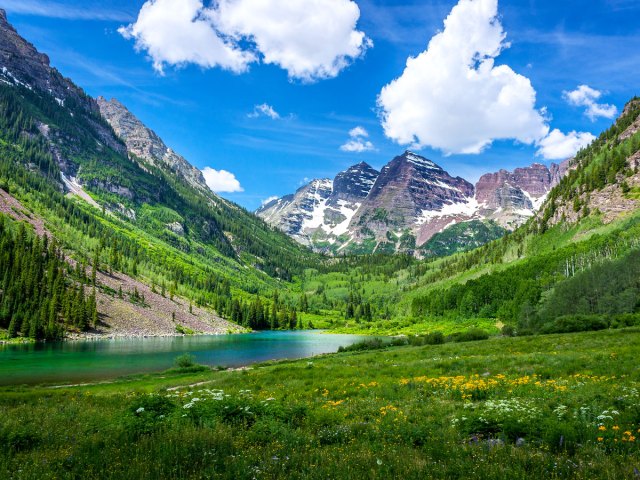For travelers interested in history, the U.S. is home to hundreds of thousands of monuments that delve into all aspects of the nation’s history, from its Indigenous communities to the early colonial era and beyond. There are also monuments that honor America’s Black history — one that has long been tangled in slavery, segregation, and systemic racism. These fascinating monuments honor the stories that have come out of this challenging, often tragic history, with landmarks across the country that pay homage to the leaders, heroes, and places that have played a crucial role in the fight for justice. Here are 10 of the best U.S. monuments to visit that honor its Black history.
African American Civil War Memorial – Washington, D.C.
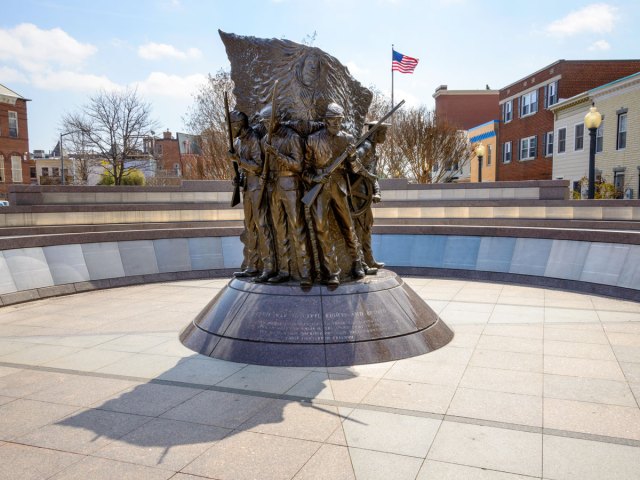
While it’s officially part of the National Mall and Memorial Parks, the African American Civil War Memorial is located in the capital’s U Street neighborhood, about 2 miles north. Honoring the Black soldiers and sailors who fought in the Army and Navy during the Civil War, the monument serves as a reminder of how their actions helped free 4 million enslaved peoples. The engraving below reads, “Civil War to Civil Rights and Beyond,” and surrounding the statue is a wall bearing the name of the service men.
The memorial is located next to the African American Civil War Museum. The museum opened in 1999 to shed light on the 209,145 members of the United States Colored Troops (USCT), who helped end slavery and kept America united under one flag, as well as to help revitalize the surrounding neighborhood, which has long been the center of D.C.’s Black history and culture.
Edmund Pettus Bridge – Selma, Alabama

Despite the Civil Rights Act of 1964 granting the equal right to vote, local practices still prevented Black Americans from registering. In protest, activists organized a 54-mile march from Selma to Montgomery, which began by crossing the bridge that spans the Alabama River. Immediately, protestors were met by Alabama State Troopers in a violent confrontation that turned March 7, 1965, into Bloody Sunday. Leading the 600 marchers was then 25-year-old activist John Lewis.
Later that month, the group did eventually make it to Montgomery, thanks to the protection of the National Guard. Lewis returned to the bridge — which has become a symbol of the movement — every year to cross it again. After his death in March 2020, his body was brought across the bridge one last time. Now efforts are underway to put Lewis’ name on the bridge, which currently bears the name of a Confederate general.
George Washington Carver National Monument – Diamond, Missouri
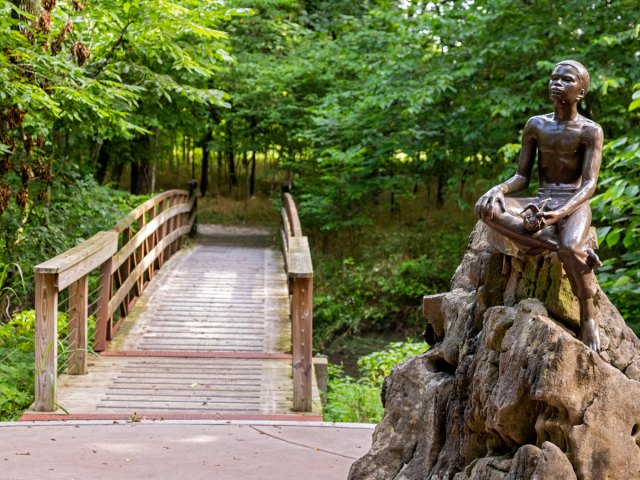
During the congressional hearings that established this national monument in 1943, George Washington Carver was described as a “a historic figure, a creative teacher, a profound thinker, a humble servant, or an inspiring teacher.” But above all, he was known as the “Peanut Man” not just for inventing more than 100 uses for the crop, but also because he also spoke in front of the House Means and Ways Committee about the need for a peanut tariff in 1921.
The site that honors Carver, who also served as the head of the Tuskegee Institute’s agriculture department, is located where he was born enslaved on a farm owned by Moses and Susan Carver. The park includes the mile-long Carver Trail through the woods where he first discovered his love for plants, as well as a visitors center, a commemorative bust, and a statue of him as a boy.
Harriet Tubman Underground Railroad National Historic Park – Church Creek, Maryland

The Harriet Tubman Byway winds through 125 miles of Maryland’s Eastern Shore and 98 miles of Delaware before ending in Philadelphia. But it’s the Harriet Tubman Underground Railroad Visitor Center in Church Creek that serves as the gateway to the 36 sites along the route. The 10,000-square-foot space features exhibits following her early years as an enslaved person in the area, as well as the secret network she developed to help guide fellow enslaved peoples to freedom.
While the area may seem to lack physical monuments, the site notes that Tubman “is memorialized in the land, water, and sky of the Eastern Shore where she was born and where she returned again and again to free others.”
Tuskegee Airmen Monument –
Charles Young Buffalo Soldiers National Monument – Wilberforce, Ohio
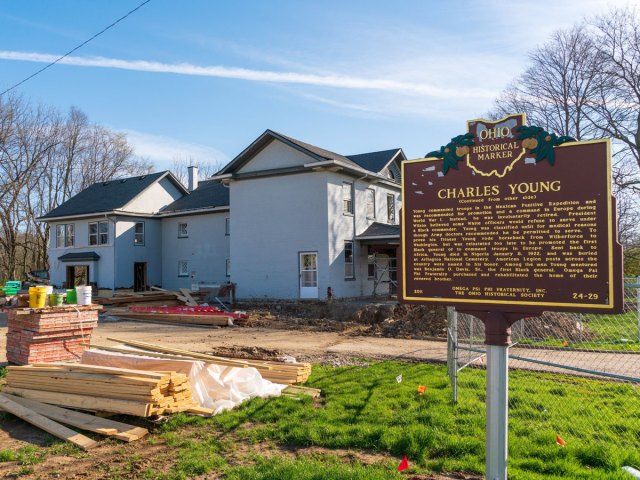
Despite being born into slavery and facing injustice as a Black American in the military, Charles Young rose through the ranks to become a U.S. Army distinguished officer and the first Black West Point graduate to reach the rank of colonel. He later became the first Black national park superintendent.
So it’s fitting that the Ohio National Monument honors his legacy, as well as those of the Buffalo Soldiers — the name given to the African American regiments that formed in 1866 and served for five decades. The monument is located in Wilberforce, where Young taught military sciences and tactics at Wilberforce University; the city is also home to the National Afro-African Museum and Cultural Center.
African Meeting House – Boston, Massachusetts

Built in 1806, the African Meeting House on Beacon Hill now stands as the oldest existing Black church in the country, as well as the first African American Baptist Church north of the Mason-Dixon line. But it became so much more than that — also serving as the central meeting place of Boston’s Black community, and even holding classes for the African School before that.
It later became a Jewish synagogue for a period, but the building was acquired by the Museum of African History in 1972 and underwent a $9.2 million renovation to restore it to its 1855 appearance.
Booker T. Washington National Monument – Hardy, Virginia
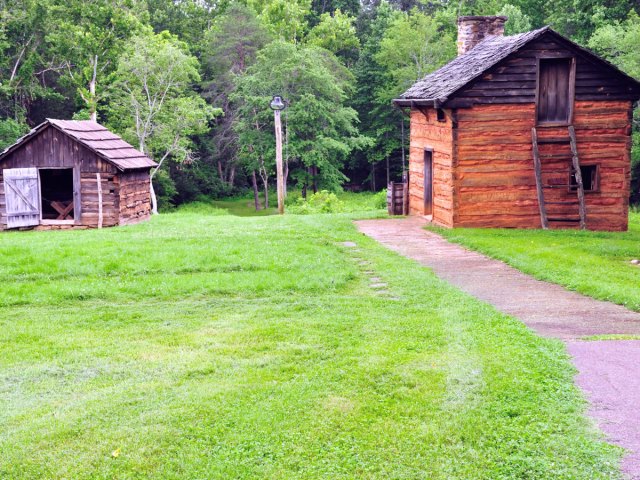
Growing up as an enslaved person on a 207-acre tobacco farm owned by James and Elizabeth Burroughs, Booker T. Washington spent his early years yearning for freedom. Now the site serves as a monument to the first president of Tuskegee Normal and Industrial Institute (which later became Tuskegee University), who reformed education and became a spokesperson for Black Americans at the turn of the 20th century.
The visitor center follows Washington’s life, both in and beyond the former plantation, which also has recreations of 19th-century farm buildings, a garden representing the planting techniques used in the 1850s, and a farm area with sheep, pigs, chickens, and horses.
Freedom Riders National Monument – Anniston, Alabama

A group of 13 Freedom Riders — both Black and white — set out in the spring of 1961 with one mission: To end segregation on buses and at bus facilities. They were met by violent opposition from white supremacists, resulting in incidents like a firebombed bus just outside of Anniston.
The two parts of this national monument include the Greyhound Bus Station on Gurnee Avenue — where the group boarded the bus to Birmingham, but were met with rocks being hurled at them and the bus tires behind slashed — and the Bus Burning Site on Old Birmingham Highway six miles away, where the tires gave out and the mob threw a burning rag, causing the explosion.
Martin Luther King, Jr. Memorial – Washington, D.C.
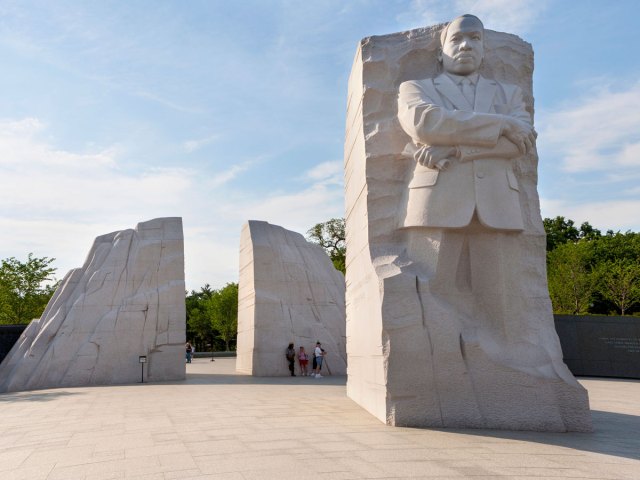
Until 2011, the National Mall didn’t have a single memorial dedicated to a Black American individual. That changed when Baptist minister-turned-civil rights activist Martin Luther King, Jr. was honored with this towering 30-foot granite stone sculpture. Symbolically located at 1964 Independence Avenue, the monument honors the Civil Rights Act of 1964. It also marked the first D.C. monument not dedicated to a President or a war.
Prominently located at the Tidal Basin opposite from the Jefferson Memorial, the landmark is packed with symbolism, stemming from King’s famous quote, “Out of the mountain of despair, a stone of hope.” Upon arrival, visitors first pass through two halves of the Mountain of Despair before reaching the Stone of Hope, where King’s statue is located.
More from our network
Daily Passport is part of Optimism, which publishes content that uplifts, informs, and inspires.










